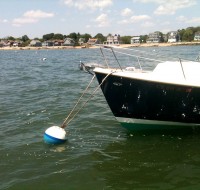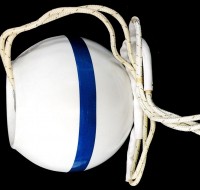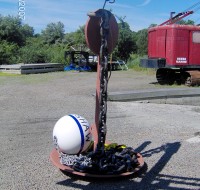Mooring anchors are a convenient and cost effective way for boat owners to secure their boats for the summer months.
A mooring system can even provide a simple and peaceful alternative to storing the boat in a slip.
However, moorings are often overlooked as boaters purchase progressively larger boats. Anchors, hardware and lines need to be properly sized for the weight and length of the boat. Making sure the anchor is correctly sized and in good condition, is a critical component to protecting your investment; your boat.
For existing moorings, a thorough inspection should be done annually, including visually inspecting the chain system and connecting hardware. Beebe Dock & Mooring Systems offers full inspection services, from New Haven to Old Saybrook, and even offers winter storage/inspection packages.
Items to consider when planning your new mooring
- What is the weight and length of your vessel?
- What is the vessels exposure to the elements, such as wind and current?
- What kind of pick up, or retrieval method will best suit your needs?
- What method do you plan to use to get to and from your boat? If it is via a dinghy, do you have a convenient place to access the water, as well as a place to store your dinghy?
Note:
- Most harbors in Connecticut require a mooring permit, which can be obtained from the local harbormaster. (Each town has their own guidelines and requirements to place a mooring)
- Also important is vessel hardware, such as cleats and chocks. All should be sufficient in size to handle the 2 mooring pendants.
- Chafe gear should also be sufficient to protect the pendant lines from being damaged during rough sea conditions.
- The more exposed a vessel is to rough sea conditions, the greater the need to obtain a larger mooring system, anchor, chain, pendants, etc.
The basic components to a mooring system are:
- Pick up stick, a float with a fiberglass pole that allows easy retrieval of the pendants.
- The pendants, 2 lines with chafe gear, attached to the bow of the boat and connected directly to the chain.
- Mooring buoy, designed to have the upper chain pass thru the center of the buoy.
- Upper chain
- Swivel assembly which connects the upper chain to the lower chain.
- Lower chain usually larger and heavier.
- Anchor, i.e. steel, cast iron, concrete.












